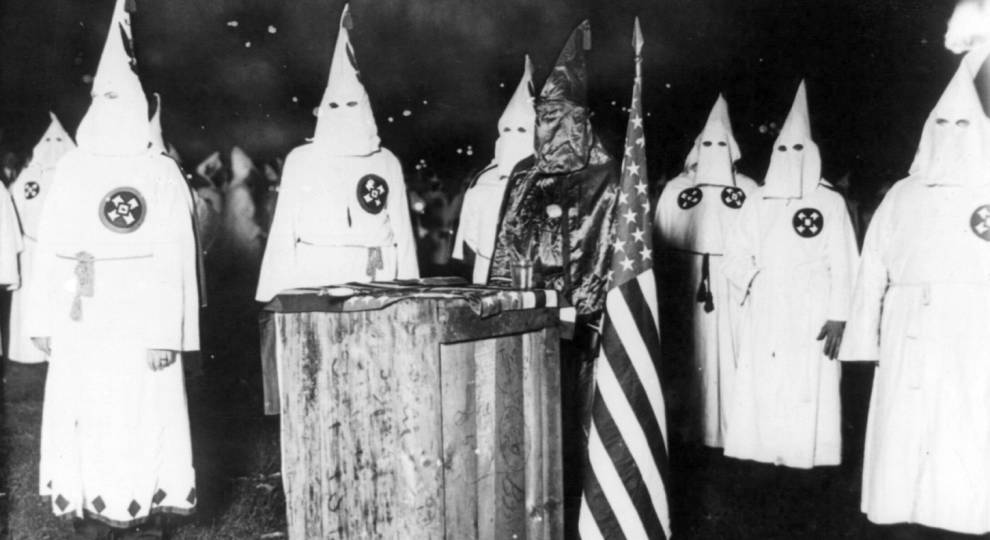Rhode Island’s Racist History

At this time of fighting police violence and reckoning with our racist past, it’s worth noting that said past is not about the South, not exclusively nor primarily. It’s about every state in the country. Even if white supremacy operated somewhat differently in different parts of the country, it was just as strong in Oregon and Maine as in Alabama and Texas and then in totally different ways than South Dakota and Oklahoma. This very much includes Rhode Island. Phil Eli has a good piece on the Ocean State’s shockingly and often little known racist past.
On June 21st, 1924, the Ku Klux Klan held a rally in Foster, Rhode Island. Thousands of people attended from across New England, some traveling in caravans of cars from Newport and New Haven. The day featured speakers from Pennsylvania and Connecticut and female lecturers who specifically addressed the women in attendance. An account published by the Rhode Island Historical Society notes that “at the conclusion of the field day and clam chowder dinner, several hundred [attendees] were initiated under a blazing cross.”
In 1924, Foster played host to a second massiveKu Klux Klan rally, this one so large — 8,000 participants, hailing from at least six states — that it was covered in the New York Times, which noted that, “there were not efforts on the part of public authorities or others to interfere.” This was one of many Klan-related events during the 1920s, including an outdoor rally in Greenville, an oyster supper featuring a “100% Klan band” in Coventry, and a public dinner-dance held at the famed Rhodes on the Pawtuxet in Cranston (the venue for my senior prom in 2003). At one point, a notice for a local Klan meeting appeared on the front page of the Woonsocket Call.
Even into the mid and late 20th century, there were overt cases of racial hatred and discrimination. In 1959, coverage of the Newport Jazz Festival mentioned hotels’ and hostels’ discrimination against black visitors. In a recent presentation, local businessman and historical consultant Keith Stokes recalled, “I grew up in Newport in the 1970s and thought constantly that at least I didn’t live in rural Mississippi, but things were just as bad in Rhode Island.” In 2000, an off-duty black Providence police officer was shot and killed by two of his fellow officers, which prompted the local NAACP to release a statement asking, “Did Officer Young have the opportunity to identify himself or is there a shoot- first, ask-questions-later policy?”
Today, it would be comforting to think that we have evolved, or that the worst American racism and discrimination happens elsewhere. But glaring — and tragic — racial disparities remain in household income, high-school dropout rates, incarceration rates, and access to health care, among other key quality-of-life metrics. For a recent example, look at the way that COVID-19 has disproportionately affected communities of color in the Ocean State.
In response to recent unrest, Governor Gina Raimondo has said that protestors’ “fear and outrage needs to be heard, and we need to address it.” But not all work falls to our elected leaders. Change can often flow from a reassessment of our shared history and the stories we tell about ourselves. You can’t fully address a problem if you suffer from what one local historian recently called “historical amnesia.” Unfortunately, that amnesia was on full – and glaring – display when House Speaker Nicholas Mattiello stumbled through a discussion of Rhode Island’s ties to the slave trade.
I mean, if you were to ask me where in Rhode Island would probably host a Klan rally today, Foster would pretty much be at the top of the list. But the much more important point here is that all our states have these horrible histories. It’s a matter of whether we look at those other states as racist or whether we take our own histories seriously and connect them up to the vast oppression taking place no matter which state you live in today.


